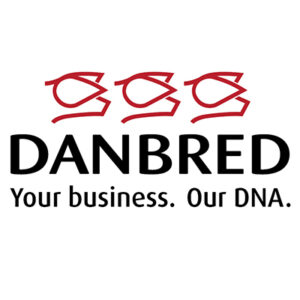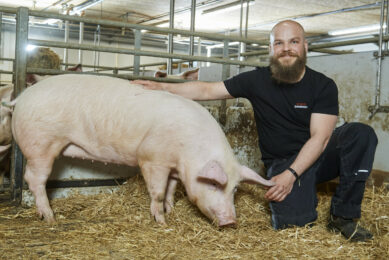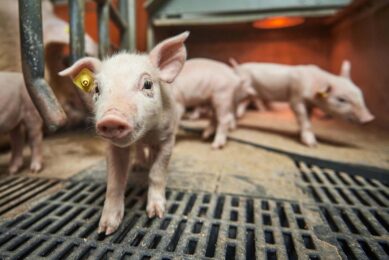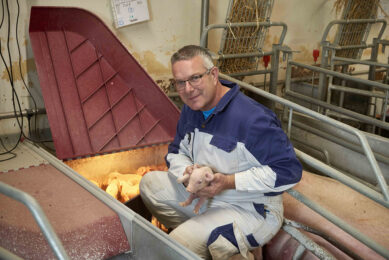Improving the sow’s nursing capacity through breeding
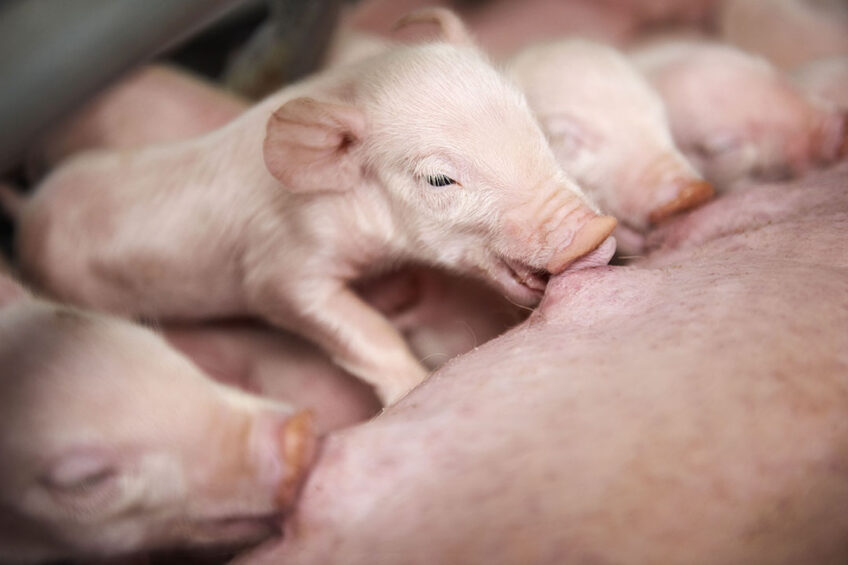
Due to the large increase in litter size over the past 10 years, we are seeing an increased need to improve the sows’ ability to nurse more piglets.
Enhanced nursing capacity of the sow is beneficial for piglet survival and piglet growth, but also for your economy. A recent pilot study conducted by the Danish Pig Research Centre, SEGES, found that the nursing capacity of DanBred sows can be improved through breeding. An improved nursing capacity is expected to have a positive effect on piglet survival and increase the size of the piglets at weaning.
DanBred Landrace and DanBred Yorkshire are already known for their excellent mothering abilities. Still, DanBred continues to optimise the genetic gain to ensure that you have the best possible conditions to generate excellent business results. One of the things DanBred is constantly working on is to increase piglet survival rate. That is why one of DanBred’s breeding goals is to improve LP5, which is the number of live piglets in the litter on day 5 after farrowing. When piglets survive the first 5 days, chances of them making it all the way to slaughter increase considerably. Thus, focus on this contributes to a higher piglet survival rate and larger litters.
The Danish Pig Research Centre, SEGES, is also extremely focused on how to improve the sows’ nursing capacities. Therefore, the department of Breeding & Genetics conducted a pilot study that examined whether the nursing capacity for DanBred Landrace and DanBred Yorkshire can be measured, and furthermore, whether it is heritable.
Lizette Vestergaard Horndrup, senior consultant in Breeding & Genetics at the Danish Pig Research Centre, SEGES, explains: “The pilot study has shown that the genetics of the 2 DanBred dam lines can be improved if the nursing capacity is measured as the litter weight at weaning. Although the nursing capacity is not a part of the DanBred breeding goals yet, the results show that it is possible to breed for increased litter weight at weaning. This trait can have both economical and sustainable advantages for piglet production, but it will also ease the workload, as breeding for this trait is expected to reduce the need for nursing sows.”
High heritability
The weight of the litter at weaning (day 21 after farrowing) can be related to the sow’s nursing capacity. The goal with the pilot study was to estimate breeding values that can increase the litter weight at weaning. The pilot study featured DanBred Landrace sows and DanBred Yorkshire sows – all pregnant with crossbreeds. And the results showed that the litter weight at weaning contained a genetic component with quite a high inheritance: 15-20%. The greatest breeding progress for this trait will be obtained if the registration happens on sows and litters from the nucleus breeding herds.
Economical gain with increased litter weight
The pilot study proved that there is indeed an economic benefit in breeding for sows with increased nursing capacity – because when the litter weight at weaning is increased, the sow will be able to nurse a larger number of piglets until weaning.
“Aside from a higher economic value, there is also a sustainable potential in increasing litter weight at weaning. At the end of the day, this means fewer feeding days before the piglets reach the desired slaughter weight. Moreover, an improved nursing capacity of the sow will reduce the need for nursing sows, which will also contribute to a more sustainable production,” says Horndrup.
The economic value of increasing litter weight at weaning was estimated using 2 different calculation methods in this pilot study, depending on how the pig producer utilised the increased litter weight. When the litter weight on day 21 after farrow increased by 1 kg, the economic value increased by €0.10 and €0.06 per slaughter pig, respectively (depending on the calculation method).


